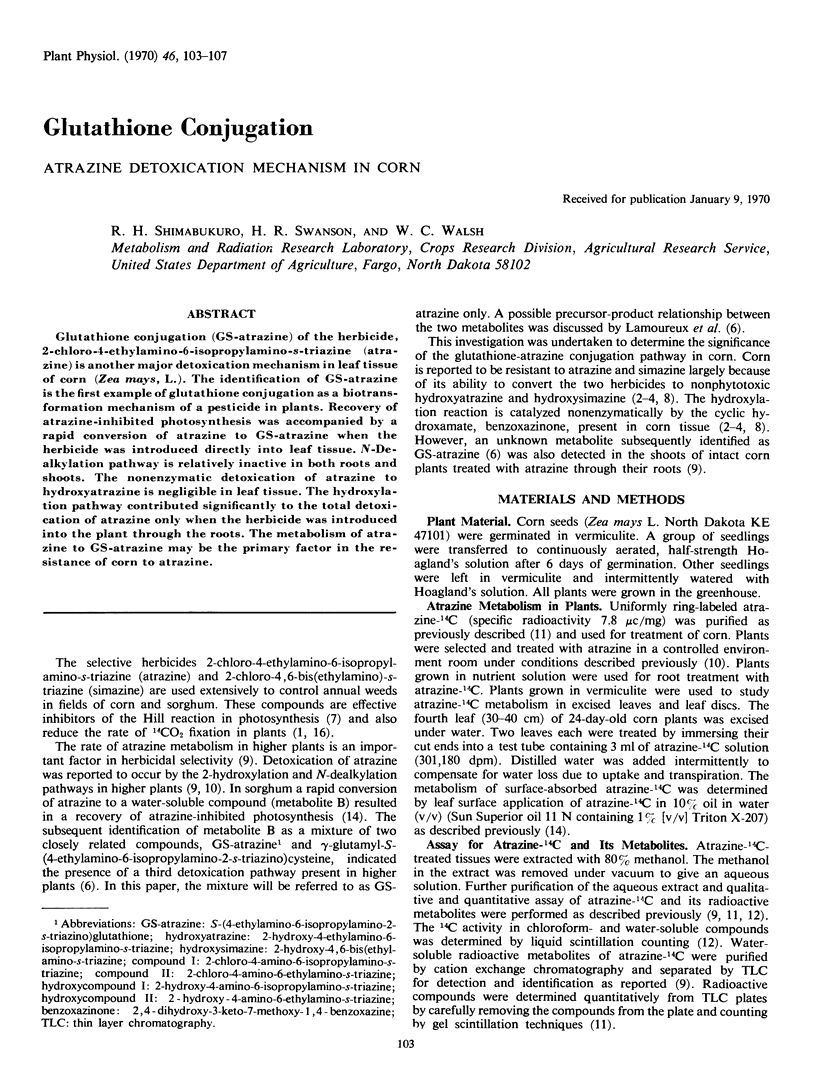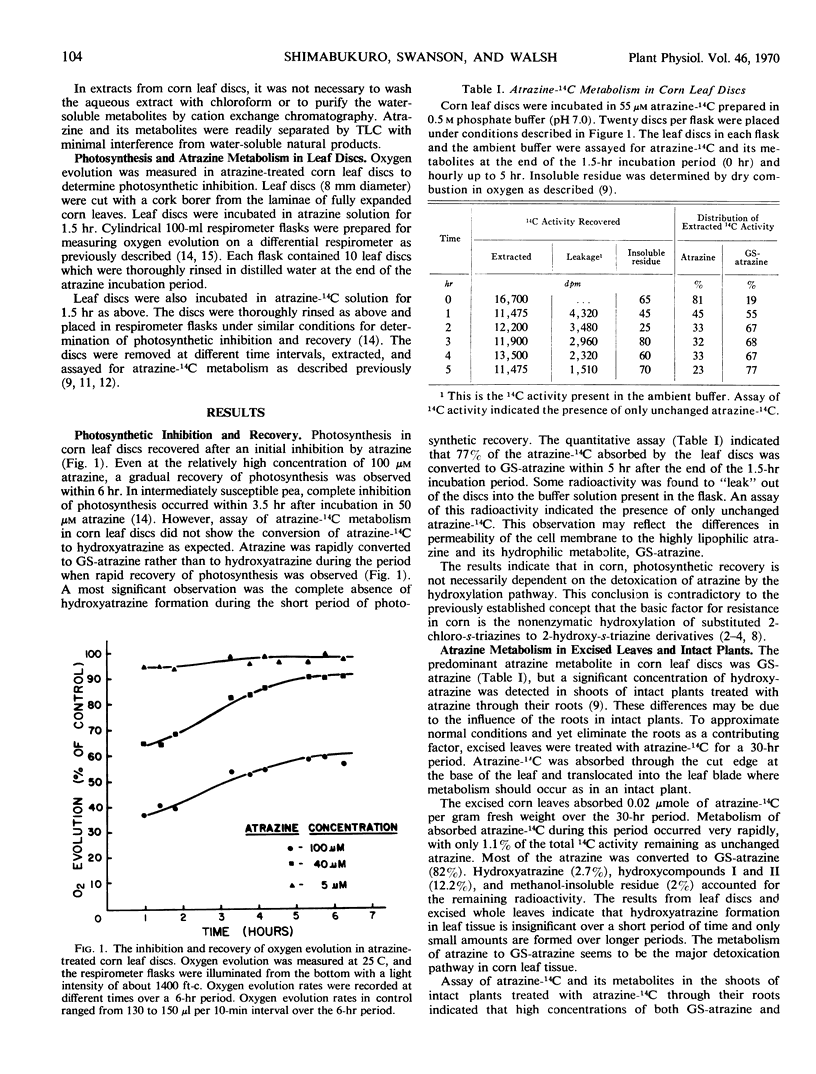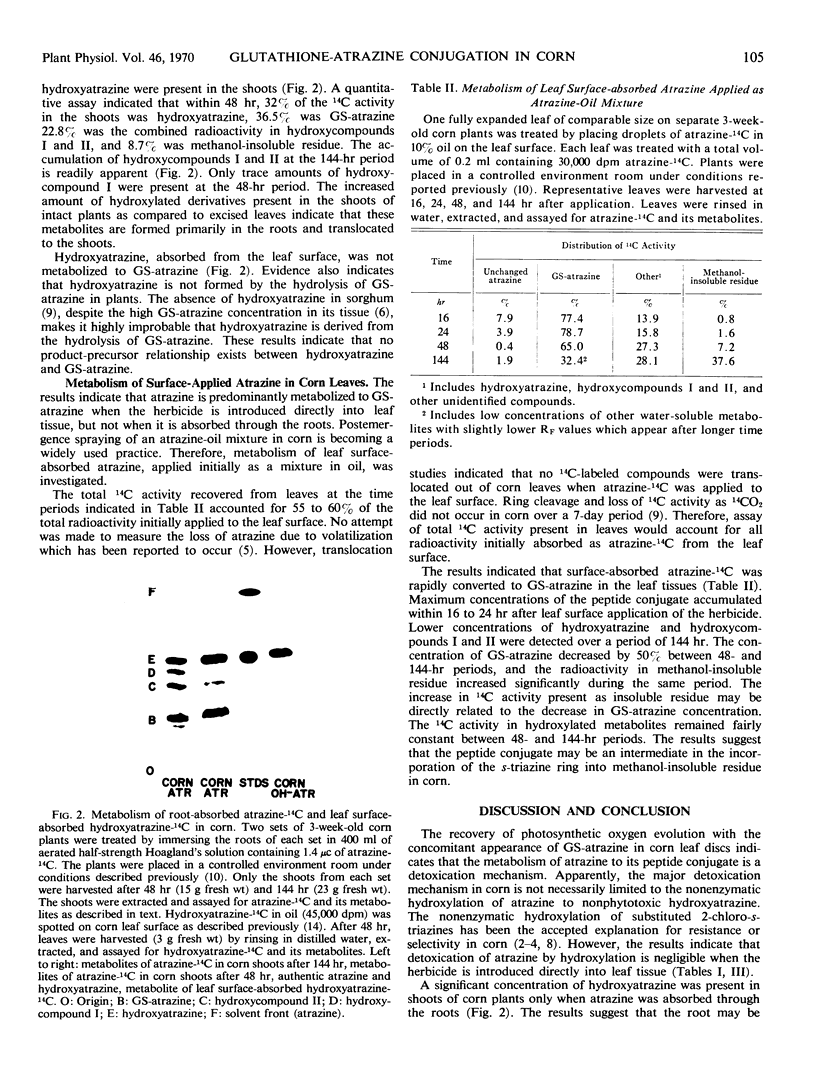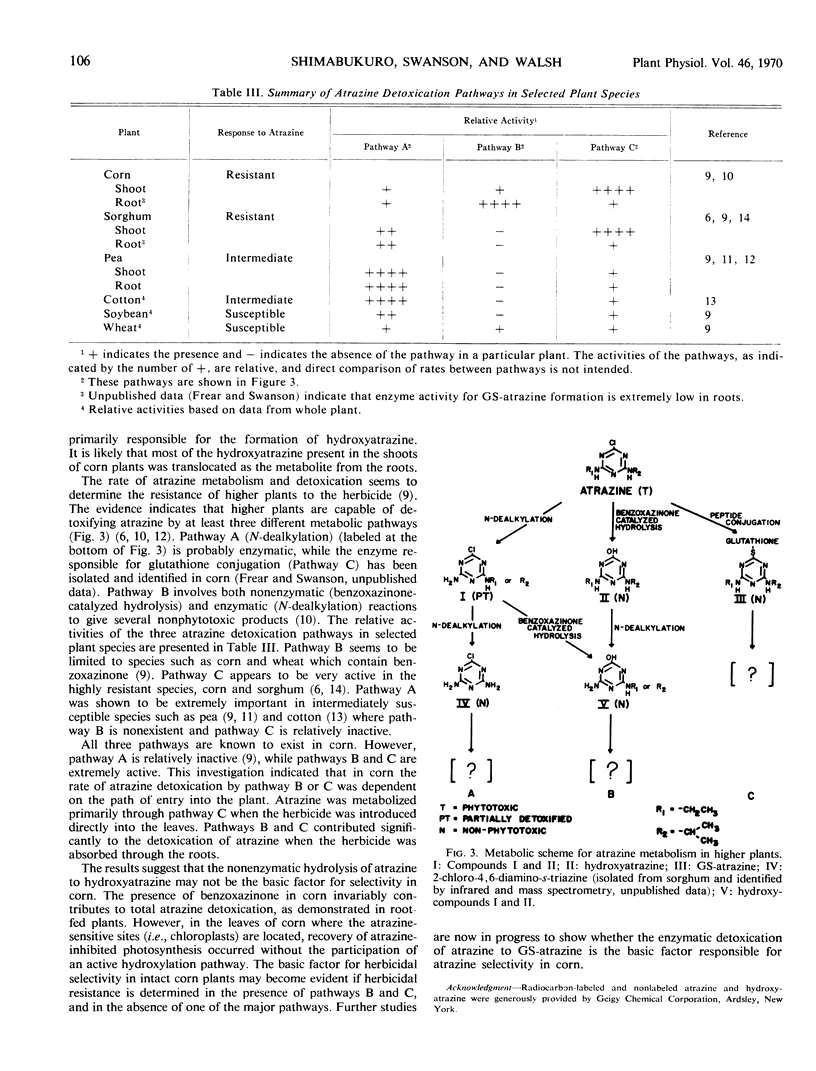Abstract
Glutathione conjugation (GS-atrazine) of the herbicide, 2-chloro-4-ethylamino-6-isopropylamino-s-triazine (atrazine) is another major detoxication mechanism in leaf tissue of corn (Zea mays, L.). The identification of GS-atrazine is the first example of glutathione conjugation as a biotransformation mechanism of a pesticide in plants. Recovery of atrazine-inhibited photosynthesis was accompanied by a rapid conversion of atrazine to GS-atrazine when the herbicide was introduced directly into leaf tissue. N-De-alkylation pathway is relatively inactive in both roots and shoots. The nonenzymatic detoxication of atrazine to hydroxyatrazine is negligible in leaf tissue. The hydroxylation pathway contributed significantly to the total detoxication of atrazine only when the herbicide was introduced into the plant through the roots. The metabolism of atrazine to GS-atrazine may be the primary factor in the resistance of corn to atrazine.
Full text
PDF




Selected References
These references are in PubMed. This may not be the complete list of references from this article.
- Hamilton R. H., Moreland D. E. Simazine: Degradation by Corn Seedlings. Science. 1962 Feb 2;135(3501):373–374. doi: 10.1126/science.135.3501.373. [DOI] [PubMed] [Google Scholar]
- Lamoureux G. L., Shimabukuro R. H., Swanson H. R., Frear D. S. Metabolism of 2-chloro-4-ethylamino-6-isopropylamino-s-triazine (atrazine) in excised sorghum leaf sections. J Agric Food Chem. 1970 Jan-Feb;18(1):81–86. doi: 10.1021/jf60167a029. [DOI] [PubMed] [Google Scholar]
- Moreland D. E., Gentner W. A., Hilton J. L., Hill K. L. Studies on the Mechanism of Herbicidal Action of 2-Chloro-4,6-Bis(Ethylamino)-S-Triazine. Plant Physiol. 1959 Jul;34(4):432–435. doi: 10.1104/pp.34.4.432. [DOI] [PMC free article] [PubMed] [Google Scholar]
- Shimabukuro R. H. Atrazine metabolism and herbicidal selectivity. Plant Physiol. 1967 Sep;42(9):1269–1276. doi: 10.1104/pp.42.9.1269. [DOI] [PMC free article] [PubMed] [Google Scholar]


